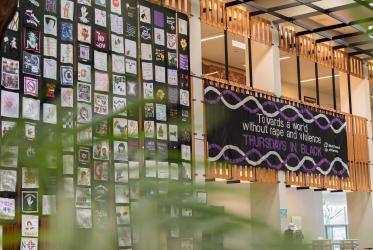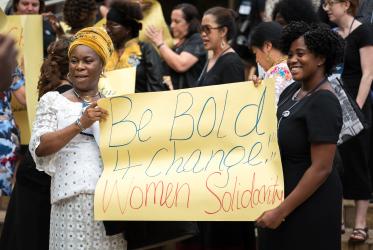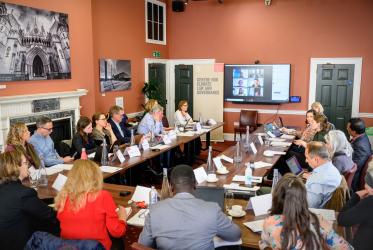Thirty years ago, the founders of the Ecumenical Decade of Churches in Solidarity with Women were searching for ways to not only help women across the globe seek justice but also highlight their contributions to churches and the world.
In 1986, as Anna Karin Hammar was working at the World Council of Churches (WCC), she was part of the team who would help introduce the Ecumenical Decade two years later, in 1988. Hammar recalled the early conversations in those days as they searched for a way to put issues women were facing high on the agenda of churches worldwide.
For Hammar, forming the Decade was always a way of advancing the WCC’s mission. “My relationship to the ecumenical movement is one of passionate involvement in whatever brings unity among people,” she said.
Preceding the start of the Decade by 11 years was a 1975 report of the WCC Nairobi Assembly, considered one of the most significant attempts to define the nature of visible church unity. That report helped form the view that justice is an essential expression of unity by addressing, among other issues, gender justice. One year later, in 1976, the United Nations Decade for Women began to promote equal rights and opportunities for women around the world.
Having seen the United Nations Decade for Women, many representatives of the WCC member churches wished to have a Decade that addressed questions specific to churches: theology, tradition, culture. “Through a worldwide effort, we wanted to help the churches to see they have a much better tradition than they think,” she explained.
When the Ecumenical Decade was established, through consultation the goals of the Decade were determined: justice, peace, the integrity of creation, ending violence against women, and honoring women’s contributions to theology.
For Hammar, the Decade was an acknowledgment of the kind of justice churches should have been seeing all along: “Of course it was the churches’ baptismal tradition that we are born, and then we are baptized into a community of equals,” she said.
Learning points along the way

The founders of the Decade also learned that violence against women is essentially violence against creation, that is, against Mother Earth.
Hammar reflected: “The Me Too movement that has become so important - in the West at least - well, I believe that Mother Earth says also: Me Too.”
Women and creation belong together, she added. “The care for creation is necessary and the respect for women’s dignity and for the dignity of the earth do belong together. That is something that is much more clear today than it was during the Decade of Churches in Solidarity with Women.”
As justice for women has become more visible through campaigns such as Me Too and Thursday in Black, a global movement promoting a world free from rape and violence, Hammar believes the next step is stronger interreligious communication.
“When we started the Ecumenical Decade, we worked with primarily Christian women, though we began working with women from other faiths. I would like to say that, today, I think we need to form an alliance between Christian women and Muslim women in a way we haven’t seen before.”
What the Decade revealed
What did the Decade reveal? It not only highlighted justice for women, but also women’s accomplishments, reflected Hammar. “The Decade recognized the immense contribution of women to justice, peace and integrity in the nation,” she said. “In addition, the Decade revealed that the church’s culture is not patriarchy: the church’s culture is one of equality.”
During the Decade, churches did take steps to bring about more equality, Hammar said.
“Churches could and did take women more seriously. They could allow women to read the gospel during the liturgy, they could bless the female as well as the male children after baptism. They could distinguish between what was patriarchal and what was actually the gospel, and in that way, many churches helped sustain a church of women and men. Many of the churches also realized during the Decade, that churches cannot do without the women, that they are the backbone of the church, that a church without the cooperation of women is not a church.”
The word “solidarity” was chosen because solidarity is at the heart of the gospel, Hammar said, “God’s solidarity with the world through Jesus Christ which forms the background to all solidarity in the world.”
Looking back on the 20 years that have passed, the most concerning trend Hammar sees today is a contempt for vulnerability. ”We are challenged to build inclusive societies and inclusive communities where our vulnerability is not suppressed and denied. It is urgent that we care for one another and respect the limits and the vulnerability also of the Earth.”
“Commemoration of Decade anniversary to assess progress towards a “just community” (WCC news release 26 September 2018)
Commemoration of the 20th Anniversary of the Ecumenical Decade of Churches in Solidarity with Women







